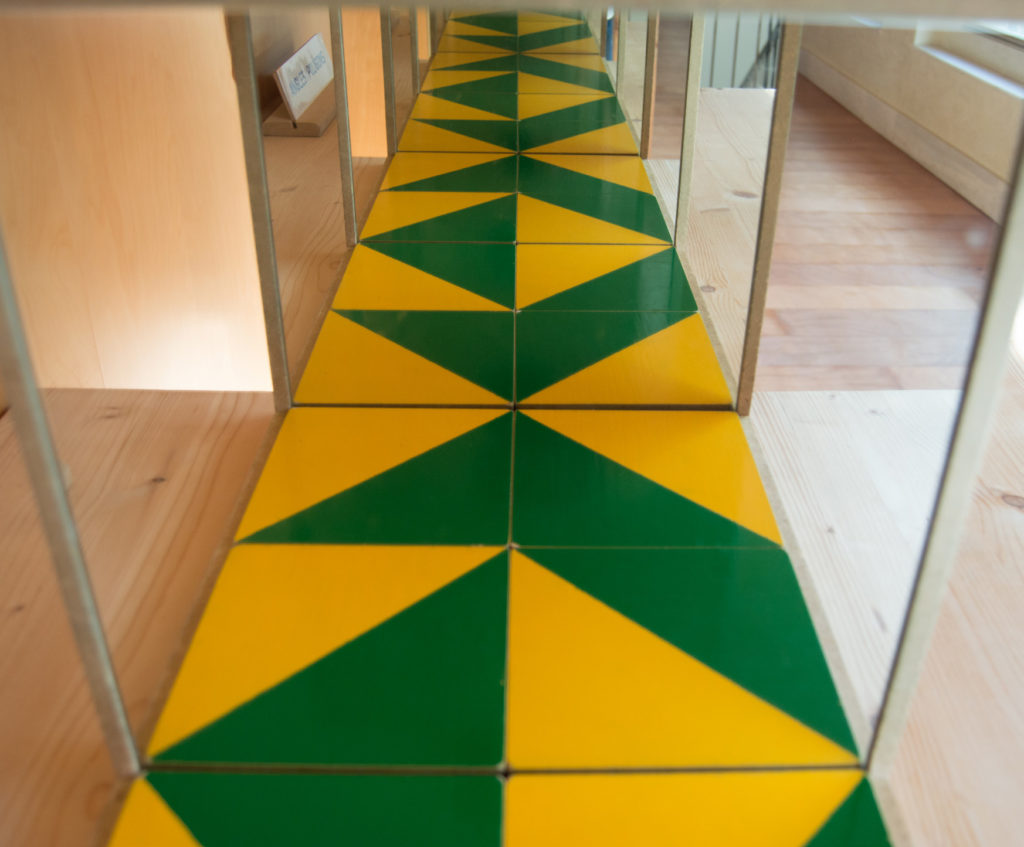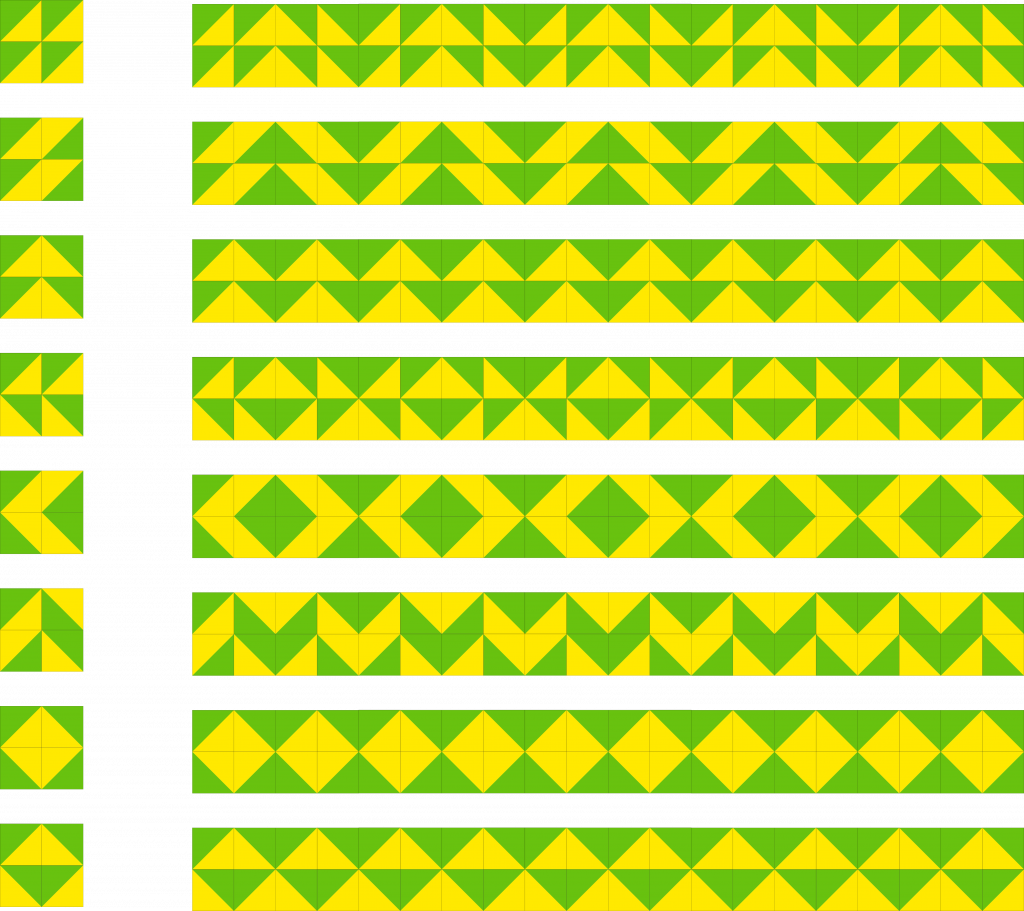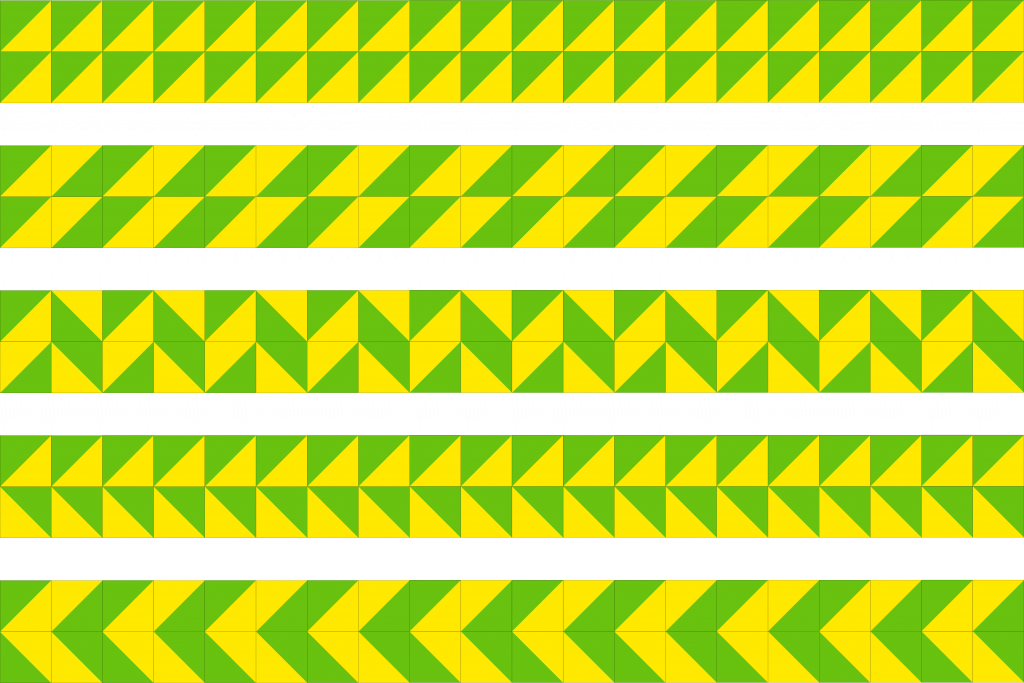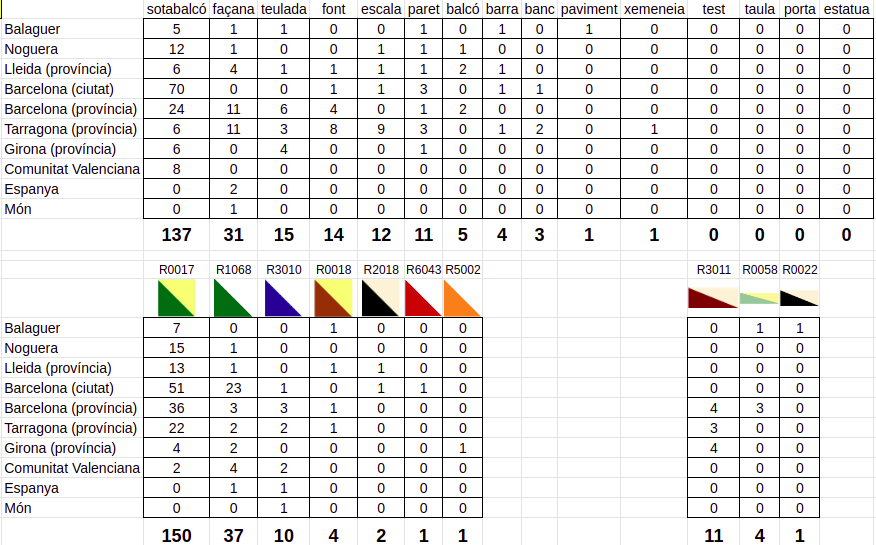Put the 4 tiles between the two mirrors and look at the infinite mosaic you created.

- Location: Emma Castelnouvo Room
- Minimum age: from 6 years old.
- Required time: 5 minutes.
- Number of participants: One or more people
- Keywords: cardboard tile, handkerchief tile, reflection, symmetry, frieze, mosaic
- Taxonomy: Geometry, art
Cardboard tiles or handkerchief tiles
This two-color tile formed by the division of a square into two triangles by its diagonal is one of the oldest traditional designs that is still in force.
It is already documented at the beginning of the seventeenth century under the name of mitadada tile. It is also known by the name of cardboard tile, candle tile or handkerchief tile.
We can find it everywhere, under the balconies, on facades, roofs, stairs, benches, pavements or walls. Sometimes filling the space on its own, sometimes framing figures or other tiling.
It contrasts its simplicity of design with the versatility of designs that are achieved by combining them. This is one of the reasons for its popularity and heritage importance.
The colleague Ramon Tejedor (on Twitter @Tejerauskas geoGebra tejerauskas), has made a compilation of locations of the cardboard tile in Catalonia.
El document conté les ubicacions d’aquests més de 330 indrets, la gran majoria en l’espai públic. Podeu col·laborar-hi enviant-li noves localitzacions.
How many different designs are there with these 4 tiles?
The space for 4 tiles between the two mirrors can be filled with no less than 256 different shapes. This is why each tile can be placed with the arrow that forms the green triangle pointing in 4 directions, with 4 tiles we have 4*4*4*4 = 256

If we consider equal designs that coincide by rolling the set of tiles, then it is necessary to divide this figure by 4.
256/4 = 64
The picture shows 8 of these 64 different ways of laying 4 tiles. On the right is the frieze(*) that is seen with the parallel mirrors.
(*) Taking the name frieze as the architectural element in the form of a horizontal band on the facades of buildings, in mathematics, a frieze is a mosaic that extends in one direction.

Can you make all the friezes with these two mirrors?
No, mirrors create repetition by symmetrically flipping the image. But in the real physical world we can not turn the tiles upside down, we can simply move them and thus build mosaics without symmetry. Pay attention to the friezes below, they do not have any vertical symmetry. Check how they cannot be done with the 2 parallel mirrors.
Unlike the friezes in the previous image, in which, if we imagine them drawn on a long strip of paper, we can bend it so that the frieze on one side and the other coincide, in these friezes there is no way in which bending the strip of paper matches the figures.

Sebastien Truchet
Sebastien Truchet (Lyon 1657–1729) was a multifaceted scientist who systematically studied the multiple patterns that can be formed with this tile. That is why these mosaics are known to mathematicians and designers as truchet tiling
Enllaços a materials
- Proposta de treball a l'aula sobre mosaics de l'Anton Aubanell
- Segona proposta de treball a l'aula sobre mosaics de l'Anton Aubanell
- Proposta treball sobre la Rajola catalana a infantil de Toni Monclús
- Propostes de Núria Serra sobre tessel·lacions
- La construcció dels 7 frisos, una proposta d'Enric Brasó

